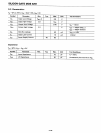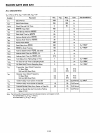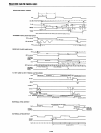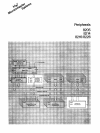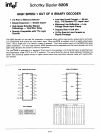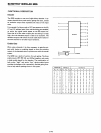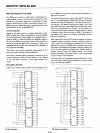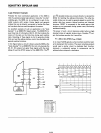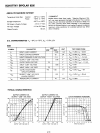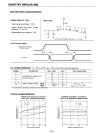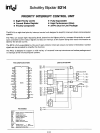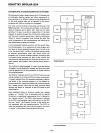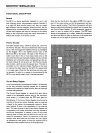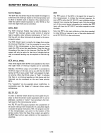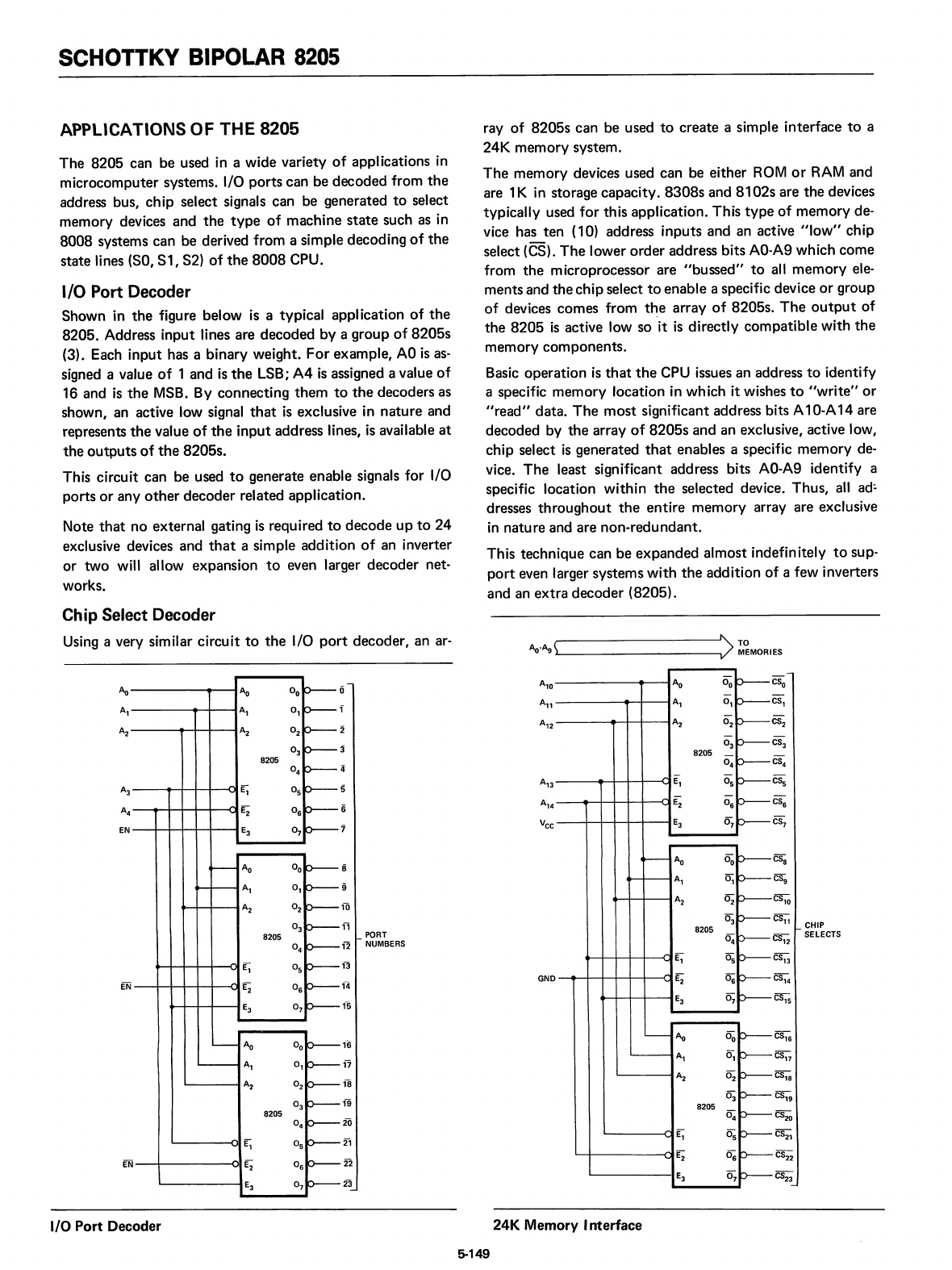
SCHOTTKY BIPOLAR
8205
APPLICATIONS OF THE 8205
The
8205 can be used
in
a wide variety
of
applications
in
microcomputer systems. I/O ports can be decoded from
the
address bus, chip select signals can be generated
to
select
memory devices and
the
type
of
machine
state
such as
in
8008 systems can be derived from a simple decoding
of
the
state lines
(SO,
S1, S2)
of
the
8008
CPU.
I/O Port Decoder
Shown in
the
figure below
is
a typical application
of
the
8205. Address input lines are decoded by a group
of
8205s
(3). Each input has a binary weight.
For
example,
AO
is
as-
signed a value
of
1 and
is
the
LSB;
A4
is
assigned a value
of
16 and
is
the
MSB.
By connecting
them
to
the
decoders as
shown, an active low signal
that
is
exclusive in nature and
represents
the
value
of
the
input address lines,
is
available
at
the
outputs
of
the
8205s.
This circuit can be used
to
generate enable signals for I/O
ports
or
any
other
decoder related application.
Note
that
no external gating
is
required
to
decode
up
to
24
exclusive devices and
that
a simple addition
of
an inverter
or
two will allow expansion
to
even larger decoder net-
works.
ray
of
8205s can be used
to
create a simple interface
to
a
24K memory system.
The
memory devices used can be either
ROM
or
RAM
and
are 1K in storage capacity.
8308s
and
8102s
are
the
devices
typically used
for
this application. This
type
of
memory de-
vice has
ten
(1
0)
address inputs and an active
"low"
chip
select (CS).
The
lower order address bits
AO-A9
which come
from
the
microprocessor are
"bussed"
to
all memory ele-
ments and
the
chip select
to
enable a specific device
or
group
of
devices comes from
t~e
array
of
8205s.
The
output
of
the
8205
is
active low so it
is
directly compatible with
the
memory components.
Basic operation
is
that
the
CPU issues an address
to
identify
a specific memory location in which it wishes
to
"write"
or
"read"
data.
The
most
significant address bits A1
O-A
14 are
decoded by
the
array
of
8205s and an exclusive, active low,
chip select
is
generated
that
enables a specific memory de-
vice.
The
least significant address bits
AO-A9
identify a
specific location within
the
selected device. Thus,
all
ad:
dresses
throughout
the
entire memory array are exclusive
in
nature and are non-redundant.
This technique can be expanded almost indefinitely
to
sup-
port
even larger systems with
the
addition
of
a few inverters
and an extra decoder (8205).
:>
~~MORIES
A
o
~
A,
0,
CS,
A
2
CS
2
CS
3
8205
CS
4
~
CSs
E;
CS
6
E
3
CS;
Ao
cs;
A,
csg
A
2
CS,o
CS
ll
CHIP
8205
CS'2
SELECTS
~
CS
t3
e;
CS'4
E
3
~
Ao
CS'6
A,
~
CS
17
A
2
CS'8
CS'9
8205
CS
20
e;
CS
2
,
e;
CS
22
E
3
CS
23
A,O----~......-.-I
A
ll
----.-..-t--I
A'2
---""-'+--+---4
24K Memory Interface
Ao-Ag''-
_
fo
fi
PORT
1"2
NUMBERS
13
14
GND
15
i6
17
is
f9
20
21
22
23
Chip Select Decoder
Using a very similar circuit
to
the
I/O
port
decoder, an
ar-
Ao
A
o
°0
A,
A,
0,
A
2
A
2
°2
°3
8205
°4
A
3
E;
Os
A
4
E2
EN
E
3
A
o
°0
A,
0,
A
2
°2
°3
8205
°4
E;
°5
EN
~
°6
E
3
Ao
A,
0,
A
2
°2
°3
8205
°4
~
°5
EN
E2
°6
E
3
°7
I/O Port Decoder
5-149




